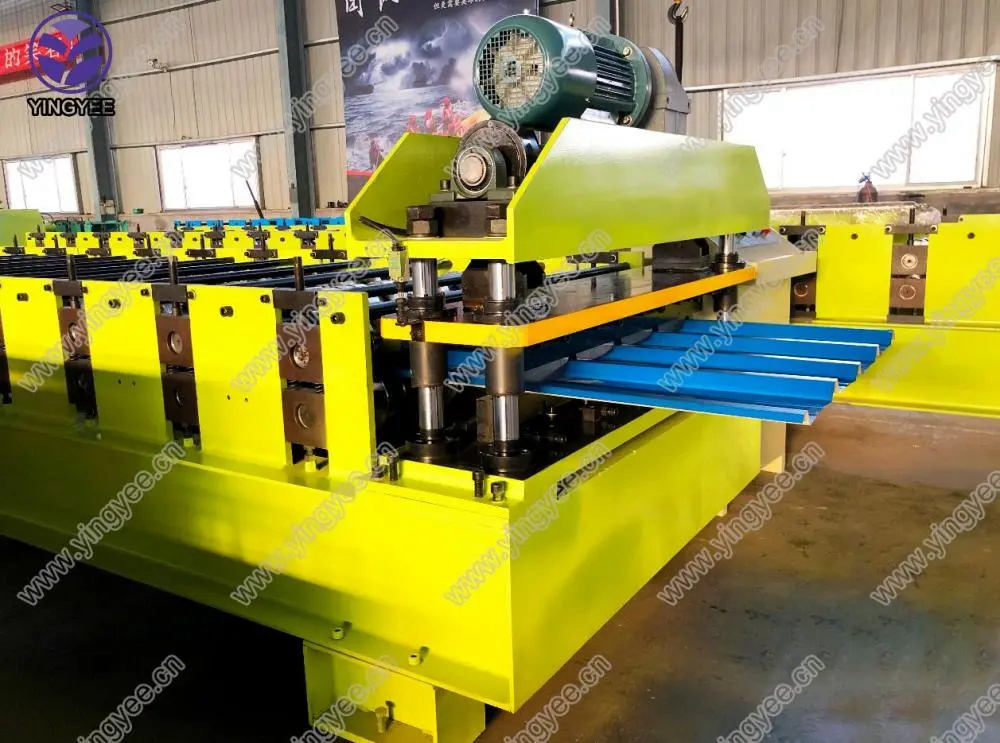
The Evolution and Importance of Automatic Round Downspout Roll Forming Machines
In the world of construction and building architecture, efficient and reliable systems are paramount to ensure the longevity and functionality of structures. One critical component that often goes unnoticed but plays a vital role in water drainage is the downspout. As structures become more complex and varied in design, the need for customized and high-quality downspouts has led to the evolution of automatic round downspout roll forming machines. These machines not only improve production efficiency but also enhance the aesthetic appeal and durability of the downspout systems.
What is an Automatic Round Downspout Roll Forming Machine?
An automatic round downspout roll forming machine is a specialized piece of equipment used to manufacture round downspouts from metal coils. It employs a series of rollers to gradually shape flat metal sheets into the desired round profile, conforming to precise measurements and specifications. The automation aspect of these machines enables consistent production, minimizing human error and reducing labor costs.
Features and Benefits
1. Precision Engineering Automatic roll forming machines are designed with advanced technology to ensure high precision in the forming process. This is crucial because any discrepancies in the downspout dimensions can lead to inefficiencies in water drainage systems, which may ultimately impact the integrity of the building.
2. Increased Production Speed With automation, these machines can produce downspouts at a significantly faster rate compared to manual methods. This efficiency is essential for high-demand industries where timely delivery is a competitive advantage.
3. Versatile Design Options Many automatic roll forming machines offer customization capabilities, allowing manufacturers to create downspouts in various sizes and styles. This versatility is beneficial in meeting the unique requirements of different architectural projects, from residential homes to commercial buildings.

4. Material Flexibility These machines can typically handle a variety of materials, including aluminum, steel, and galvanized iron. This flexibility enables manufacturers to choose the most suitable material for their project’s climate and budget constraints.
5. Reduced Waste The precision of modern roll forming technology minimizes material waste. Unlike traditional methods that may involve cutting large sheets into smaller pieces, roll forming uses the entire length of the metal coil, making it a more sustainable option.
The Role in Modern Architecture
Incorporating automatic round downspout roll forming machines into the production process has a significant impact on architectural design. As designers and architects push the boundaries of modern buildings, the demand for aesthetically pleasing and functional drainage systems increases. Custom round downspouts not only serve a practical purpose in directing rainwater away from structures but also add a sleek, modern touch to the building's overall appearance.
Moreover, with the growing emphasis on eco-friendly building practices, manufacturers are leveraging these machines to create downspouts that adhere to green building standards. By choosing recyclable materials and minimizing waste during production, companies are aligning with sustainable initiatives that appeal to environmentally conscious consumers.
Conclusion
The automatic round downspout roll forming machine represents a critical advancement in manufacturing technology, providing the construction industry with tools to enhance production efficiency and quality. As buildings continue to evolve, so too will the systems that support them, emphasizing the need for reliable and aesthetically pleasing water management solutions. By investing in these advanced machines, manufacturers can position themselves at the forefront of innovation, ready to meet the diverse needs of modern architecture and construction. Through such technological advancements, the once humble downspout can now be a symbol of both functionality and design prowess in contemporary structures.